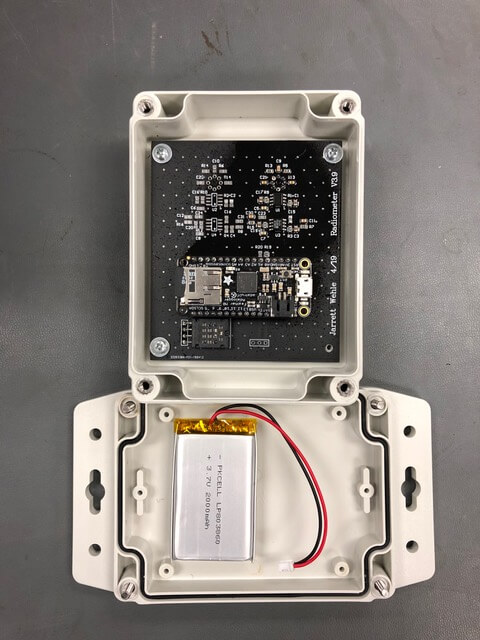Development of low-cost, field-deployable radiometers for satellite derived land surface temperature algorithm calibration
Principal Investigator(s)
Aaron Gerace
Research Team Members
Jonathan Miller, Jarrett Wehle, Rehman Eon, Tania Kleynhans, Ethan Poole, Matthew Montanaro, Robert Kremens
Project Description
The Landsat program is planning to release a Land Surface Temperature (LST) product as part of the Landsat Collection 2 archive. These products, derived from single-channel (Landsats 4 -7) and split window (Landsats 8 and 9) techniques, have been coarsely validated by utilizing large water bodies of known temperatures and by utilizing NOAA’s Surface Radiation Budget network (SURFRAD) broadband radiometers over select land targets. However, these datasets supply limited validation data over a limited range of surface emissivities, temperatures, and atmospheric conditions. A small, low-cost, field-deployable radiometer was constructed us- ing low power electronics and a thermopile built by Dexter Research Center and is being characterized to determine its potential as an accurate instrument for LST validation, see Figure (left). The radiometer contains two spectral channels that mirror the Landsat 8 thermal bands with the flexibility of adding more spectral channels in the future. It is powered by an internal battery, stores the thermal data on a micro SD card, and can be placed in the field to collect data for multiple weeks.
Project Status:
To date, five radiometers have been constructed and used to take thermal measurements of a field on the south end of the RIT campus during two Landsat overpasses, see Figure (right). Comparisons of the measured surface temperatures to the satellite-derived surface temperatures indicate that the radiometers are performing as expected. Two radiometers will be delivered to our collaborators at University of Arizona (U of A) and South Dakota State University (SDSU) to test the fidelity of the instrumentation under different environmental conditions. Future radiometer designs will incorporate lessons learned from this first prototype with an emphasis placed on making them field-ready to withstand harsh environmental conditions.
